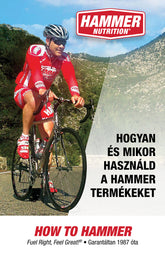Intermittent fasting. Making it work for the hard worker
By Dr. Bayne French
Any “hard worker” can go without eating and realize the benefits of fasting. It might take a little practice, like anything else worthwhile. A hardworking individual with a busy J.O.B. (Just Over Broke), and regular training might find IF (intermittent fasting) more of a challenge. Doable nevertheless, and so worth it.
I work my ass off. I have side hustles for my side hustles. I also exercise most days. What I don’t do anymore is train multiple hours every week, to compete. It just became unfair for all the other competitors.
It wasn’t too long ago that I would wake up at un-Godly hours to undergo suffrage, before my regular job. As if my work wasn’t suffrage enough. I’d then come home and run. Sound familiar?
Nutrition might seem the easy part. Heck, you “earned it” so eat whatever you want. That’s how it used to be for me. I could easily justify granola, beer, bread and ice cream. And beer.
It is obvious to me now that dietary choices can either impair or bolster human performance. Having a few extra pounds of white adipose tissue (fat) makes your power-to-weight ratio less favorable. Not being able to access fat tissue for fuel is an endurance travesty.
How about this scenario: You continue to train like a monster, and all the while slowly optimize your biochemistry thus yielding massive amounts of ATP?
ATP is adenosine triphosphate. It is our bodies energy currency. It directly makes muscles contract, which might be of some importance to you endurance savages.
Patient: “I want to lose weight”.Me: “Nope. You want to burn fat”.
Endurance person: “I want to run/bike/swim faster”.Me: “Nope. You want to generate more ATP”.
In my upcoming Pulitzer-worthy article High Carbohydrate Athletic Fueling. A Fad Metabolic Dumpster Fire, I explain how fat tissue is a giant repository of potential ATP. Potential because many endurance athletes are following the inane practice of sugar gorging, thus lots of ATP from fat tissue a molecular impossibility.
Follow this progression if you dare:
Maybe you can relate to this scenario: You’d like to be a full-time endurance athlete but can’t swing it. You have a J.O.B. and side hustles probably, what with the price of gas. But you’re nimble and hungry, always striving, nay compelled, for endurance betterment.
You’re intrigued by this concept of enhanced fat burning and massive ATP production. Furthermore, the new widely promoted technique of massive sugar fueling intuitively seems like a metabolic dumpster fire and you want to go a different direction. But how?
This represents just an example. You apply the principles to your respective scenario. Curtail this as hunger, cravings, energy levels and performance dictate.
What have you done here? Well, first of all you’ve navigated a day on this tumultuous planet which is a tremendous accomplishment. You’ve also had a 12-hour day fast, and an 11-hour night fast. You’ve eaten two large, delicious, nutrient-dense, lower carb meals.
You’ve avoided major blood sugar spikes and insulin dumps. Both of which are metabolically really unhealthy. You’ve improved access to fat stores and a massive repository of ATP formation. You’ve also given an upraised middle finger to self-proclaimed pontiffs that promote massive sugar consumption, “gut training”, and other practices I consider biochemically flawed and frankly harmful.
As you undergo cellular retooling, allow yourself some grace to sacrifice short-term performance for the bigger picture of enhanced fat burning. Attempt to be ok with not feeling right. Optimal fat burning efficiency can take many months but great adaptability, tolerability and efficiency can be experienced in days to weeks.
Now sleep, cute thing, and do it all over again tomorrow.
Any “hard worker” can go without eating and realize the benefits of fasting. It might take a little practice, like anything else worthwhile. A hardworking individual with a busy J.O.B. (Just Over Broke), and regular training might find IF (intermittent fasting) more of a challenge. Doable nevertheless, and so worth it.
I work my ass off. I have side hustles for my side hustles. I also exercise most days. What I don’t do anymore is train multiple hours every week, to compete. It just became unfair for all the other competitors.
It wasn’t too long ago that I would wake up at un-Godly hours to undergo suffrage, before my regular job. As if my work wasn’t suffrage enough. I’d then come home and run. Sound familiar?
Nutrition might seem the easy part. Heck, you “earned it” so eat whatever you want. That’s how it used to be for me. I could easily justify granola, beer, bread and ice cream. And beer.
It is obvious to me now that dietary choices can either impair or bolster human performance. Having a few extra pounds of white adipose tissue (fat) makes your power-to-weight ratio less favorable. Not being able to access fat tissue for fuel is an endurance travesty.
How about this scenario: You continue to train like a monster, and all the while slowly optimize your biochemistry thus yielding massive amounts of ATP?
ATP is adenosine triphosphate. It is our bodies energy currency. It directly makes muscles contract, which might be of some importance to you endurance savages.
Patient: “I want to lose weight”.Me: “Nope. You want to burn fat”.
Endurance person: “I want to run/bike/swim faster”.Me: “Nope. You want to generate more ATP”.
In my upcoming Pulitzer-worthy article High Carbohydrate Athletic Fueling. A Fad Metabolic Dumpster Fire, I explain how fat tissue is a giant repository of potential ATP. Potential because many endurance athletes are following the inane practice of sugar gorging, thus lots of ATP from fat tissue a molecular impossibility.
Follow this progression if you dare:
- If you really want to improve human endurance performance, you need to generate lots of ATP.
- Burning fat for fuel liberates heaps of ATP.
- In order to burn fat, you must gain access to your fat stores.
- You cannot access fat stores with elevated insulin levels.
- High carb consumption elevates insulin levels.
- Lower insulin levels allow the burning of fat, and thus copious ATP generation.
- Lower carbohydrate consumption during the day and during endurance fueling prevents insulin spikes thus allowing access to fat burning.
- Intermittent fasting lowers blood sugar, lowers insulin, and amplifies fat burning.
Maybe you can relate to this scenario: You’d like to be a full-time endurance athlete but can’t swing it. You have a J.O.B. and side hustles probably, what with the price of gas. But you’re nimble and hungry, always striving, nay compelled, for endurance betterment.
You’re intrigued by this concept of enhanced fat burning and massive ATP production. Furthermore, the new widely promoted technique of massive sugar fueling intuitively seems like a metabolic dumpster fire and you want to go a different direction. But how?
- Wake up at 5 AM.
- Hydrate, have coffee, and stoke the fire.
- 5:30-7:30 exercise. I mean get after it. Go hard, with light fueling. If your workout is less intense and <90 minutes, consider not fueling at all during that exercise event.
- 8 AM eat. Meat, eggs, sautéed greens, fruit, and nut butters. Ideally a smaller amount of carbohydrate. If you want to train your ability to burn fat as you do your cardiopulmonary fitness, then resist cereal grains, bagels, juice, sugar in your coffee, and other dumpster fire breakfast foods that idiots tell you to eat.
- Go to work. Sorry. Price of gas and alimony.
- 5 PM freedom, kinda.
- Change clothes, hydrate, and exercise commences again at 6 PM. What a gift it is to be able to move your body in a vigorous way.
- Shower at 8 PM.
- 8:30 PM eat a giant fatty salad, meat, vegetables, and maybe you enjoy some starch. Potatoes, corn, rice and the like are less metabolically potent with the evening meal.
- 9:30 get horizontal.
This represents just an example. You apply the principles to your respective scenario. Curtail this as hunger, cravings, energy levels and performance dictate.
What have you done here? Well, first of all you’ve navigated a day on this tumultuous planet which is a tremendous accomplishment. You’ve also had a 12-hour day fast, and an 11-hour night fast. You’ve eaten two large, delicious, nutrient-dense, lower carb meals.
You’ve avoided major blood sugar spikes and insulin dumps. Both of which are metabolically really unhealthy. You’ve improved access to fat stores and a massive repository of ATP formation. You’ve also given an upraised middle finger to self-proclaimed pontiffs that promote massive sugar consumption, “gut training”, and other practices I consider biochemically flawed and frankly harmful.
As you undergo cellular retooling, allow yourself some grace to sacrifice short-term performance for the bigger picture of enhanced fat burning. Attempt to be ok with not feeling right. Optimal fat burning efficiency can take many months but great adaptability, tolerability and efficiency can be experienced in days to weeks.
Now sleep, cute thing, and do it all over again tomorrow.











